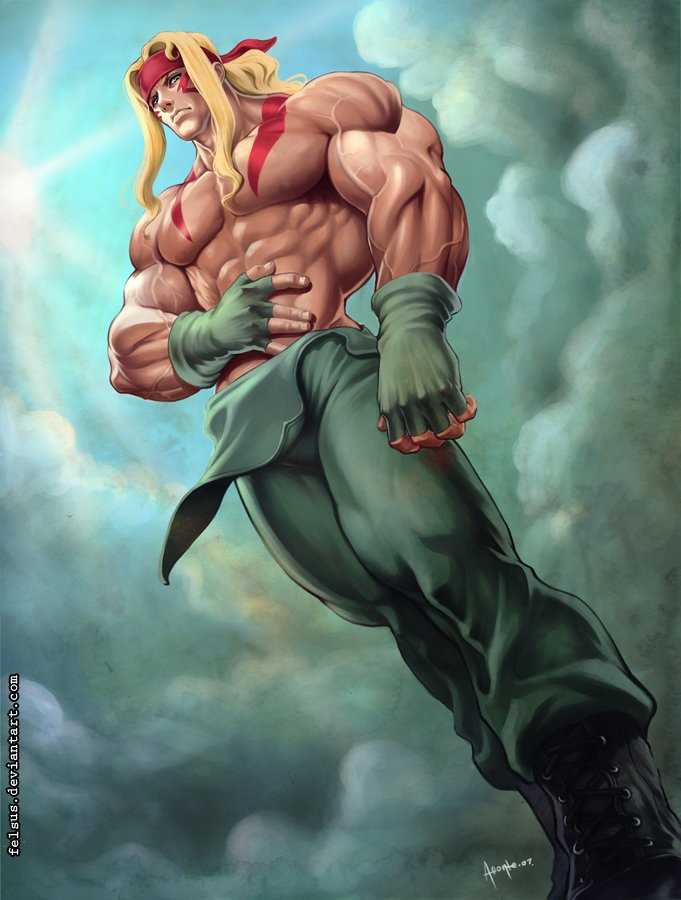Street art has become a prominent form of artistic expression, transforming cityscapes and turning mundane walls into creative masterpieces. These colorful and thought-provoking artworks not only enhance the aesthetic appeal of urban environments but also serve as a powerful medium for social commentary. While street art is often associated with graffiti and illicit activities, it has evolved into a legitimate art form, attracting artists and enthusiasts from all walks of life.
Creating a street art masterpiece requires careful planning and a detailed approach. The canvas for street art extends beyond traditional materials like canvas or paper; it encompasses the entire urban landscape. Artists embark on a journey to find the perfect location that not only allows for maximum exposure but also has the potential to complement their artistic vision. They take into consideration factors such as visibility, accessibility, and the overall aesthetic of the area, ensuring that their artwork enhances the surroundings rather than clashing with them.
The first step in the process of creating street art is conceptualization. Artists brainstorm ideas, draw sketches, and visualize their artwork on the chosen canvas. They meticulously plan every aspect of their creation, from color palettes to composition, ensuring that their message is effectively conveyed. Each stroke of the brush or spray of the paint is intentional; every detail is carefully thought out to create a visually captivating and meaningful piece of art.
Street art often serves as a platform for social and political commentary, giving a voice to marginalized communities and shedding light on important issues. Artists use their creations to provoke thought, challenge the status quo, and promote dialogue. They employ various techniques, such as stenciling, murals, and installations, to create impactful visuals that resonate with the viewers. Street art has the power to transform public spaces into open-air galleries, inviting people from all walks of life to engage with the artwork and reflect on the messages it conveys.
Mural art is a form of street art that involves large-scale paintings or designs displayed on the walls of buildings or other public spaces. This art form is often created by professional artists or teams of artists and is meant to beautify and enliven urban environments.
Mural art can range from realistic depictions of people or landscapes to abstract or graffiti-inspired designs. It can be created using a variety of mediums, including paint, chalk, and even mosaic tiles. The scale and complexity of mural art can vary greatly, from small, simple designs to massive works that cover multiple stories of a building.
One of the defining characteristics of mural art is its accessibility. Unlike artwork displayed in galleries or museums, mural art is intended to be seen and appreciated by anyone passing by. It can transform an otherwise mundane space into a vibrant and engaging visual experience.
Mural art has a long and rich history, dating back to ancient civilizations. In more recent times, it has become a popular form of expression for artists around the world. It is often used as a means of storytelling, conveying messages of social or political importance.
While mural art can be created with the permission and support of local governments or property owners, it has also been embraced by the underground street art movement. Many street artists create unauthorized murals as a way to reclaim public spaces and challenge traditional notions of art and ownership.
Mural art has the power to transform the way we perceive and interact with our surroundings. It can bring beauty, inspiration, and a sense of community to even the most urban and industrial spaces. Whether you come across a massive mural in a city or a small-scale design in a suburban neighborhood, take a moment to appreciate the creativity and skill that went into its creation.
Tagging and Graffiti
Tagging and graffiti are two common forms of street art that have gained popularity in urban areas around the world. While some may argue that these forms of art involve the defacement of public property, others see it as a creative expression of the urban environment.
Tagging
Tagging refers to the act of writing one’s signature or alias in a stylized manner using spray paint or marker. It is often done quickly and with little regard for aesthetics, with the focus being on the act of marking one’s presence in a particular place. Tagging can be found in various locations such as walls, buildings, bridges, and even vehicles.
For those involved in graffiti culture, the act of tagging is seen as a way to gain recognition and establish a reputation within the community. Taggers often compete to have their tags displayed in the most visible and challenging locations, which can lead to a sense of accomplishment and status among their peers.
Graffiti
Graffiti, on the other hand, is a more complex form of street art that involves the use of imagery, symbols, and words to convey a message or create visually appealing designs. Unlike tagging, graffiti is usually more elaborate and thoughtfully executed, often taking more time and effort to create. It can range from simple and crude to highly detailed and intricate murals.
Graffiti artists may choose to use a variety of techniques and materials, including spray paint, stencils, stickers, and markers, to create their artwork. They often draw inspiration from a wide range of sources, such as popular culture, social issues, and personal experiences.
- While graffiti can be seen as a form of vandalism and illegal activity in some jurisdictions, it has also gained recognition as a legitimate form of public art in many communities.
- Cities around the world have designated specific areas or walls where graffiti artists can legally create their artwork, allowing for the development of vibrant street art scenes.
- Graffiti festivals and events have also become common, providing artists with the opportunity to showcase their skills and interact with other members of the street art community.
Tagging and graffiti, although controversial, have undoubtedly left a significant impact on the art world. They challenge traditional notions of art and make bold statements about society and culture. Whether you view them as acts of defacement or acts of creativity, tagging and graffiti continue to shape the urban environment and provoke thought and discussion.
Spray Paint Techniques

Spray paint is a popular medium used by street artists for creating vibrant and eye-catching murals. There are several techniques that artists can employ to achieve different effects and styles with spray paint.
1. Stenciling

Stenciling is a technique where artists use pre-cut stencils to create precise and intricate designs. This technique allows for clean lines and sharp edges. Artists can layer multiple stencils to create complex compositions and add depth to their artwork. Stenciling is a great technique for beginners as it is relatively easy to control and provides consistent results.
2. Freehand

Freehand spray painting involves applying the paint directly onto the canvas without the use of stencils or guides. This technique requires a steady hand and a good sense of control. Artists can create flowing and organic shapes, as well as experiment with different brush strokes to achieve interesting textures. Freehand spray painting allows for a more spontaneous and expressive style.
3. Blending and Fade Effects

Blending and fade effects can be achieved by layering different colors of spray paint. This technique involves creating smooth transitions between colors to produce a gradient effect. Artists can use techniques such as the “fade” technique, where they spray lighter colors first and gradually layer darker colors over them. This creates a gradual fade from light to dark and adds depth and dimension to the artwork.
4. Drips and Splatters
Drips and splatters are popular techniques used in street art to create an urban and dynamic look. Artists achieve this effect by spraying the paint close to the canvas and allowing it to drip or splatter naturally. This technique can create an abstract and energetic style, adding movement and excitement to the artwork.
These are just a few of the many spray paint techniques that street artists use to create their unique and captivating artwork. Each technique offers different possibilities for artistic expression and experimentation. It is the combination of these techniques and the artist’s creativity that truly brings street art to life.
Stencil Art

Stencil art is a popular form of street art that involves creating images or designs by cutting out shapes or patterns in a stencil and then applying paint or other materials to a surface. Stencil art allows artists to quickly reproduce the same image multiple times, making it a popular technique for creating large-scale murals or street art installations.
One of the key benefits of stencil art is its versatility. Artists can create intricate and detailed designs by carefully cutting out different shapes and layers in the stencil. This allows for precise control over the final image and gives artists the ability to create realistic portraits, landscapes, or abstract designs.
To create stencil art, artists typically use a variety of materials, including stencil paper, cutting tools such as knives or scissors, and different types of paint or spray cans. The stencil is placed on the surface to be painted, and the artist then applies paint or other media over the cut-out areas of the stencil to create the desired image.
The History of Stencil Art
Stencil art has a long history that can be traced back to ancient civilizations. Stencil techniques were used by the Egyptians and the Greeks to create patterns on vases and walls. In more recent history, stencil art gained popularity as a form of political expression during the 20th century, with artists such as Banksy using stencils to create political and social commentary.
Famous Stencil Artists
There have been many notable stencil artists throughout history who have made significant contributions to the art form. Banksy, a British street artist, is perhaps the most well-known stencil artist, famous for his thought-provoking and often politically-charged stencil graffiti. Other notable stencil artists include Blek le Rat, Jef Aerosol, and Shepard Fairey.
| Benefits of Stencil Art |
|---|
| Allows for precise control over the final image |
| Enables artists to reproduce the same image multiple times |
| Can be used to create detailed and intricate designs |
| Provides a versatile technique for creating large-scale works |
Street Art Vs. Traditional Art

Street art and traditional art are two distinct forms of artistic expression that have their own unique characteristics and significance. Both art forms have their place in society, but they differ in terms of medium, audience, and purpose.
Medium
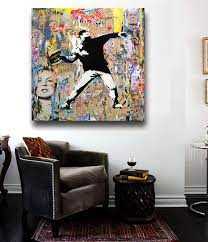
Traditional art typically refers to art created using traditional mediums such as paint, pencil, or clay. It is generally produced by trained artists who have studied techniques and skills passed down through generations. Street art, on the other hand, is often created using unconventional materials like spray paint, stencils, or posters. It often takes the form of murals or graffiti and can be found on buildings, walls, or sidewalks.
Audience
Traditional art is typically displayed in art galleries, museums, or private collections, where it is viewed by a more select audience of art enthusiasts, collectors, and curators. Street art, on the other hand, is often created in public spaces and is accessible to a wider audience. It is often intended to provoke a reaction or spark a conversation with the general public, regardless of their interest or knowledge of art.
Street art can reach a diverse range of people, including those who may not typically engage with traditional art. It has the ability to bring art directly to the public, creating a visual impact and serving as a platform for social commentary or political expression.
Purpose

The purpose of traditional art is often to evoke emotion, capture beauty, or convey a narrative. Artists may draw inspiration from personal experiences, historical events, or cultural traditions. Traditional art is often seen as a reflection of the artist’s skills, creativity, and technical mastery.
Street art, on the other hand, often has a more subversive or rebellious purpose. It can be a form of protest, a way to challenge authority or societal norms, or a means of reclaiming public spaces. Street art is often temporary and can be subject to removal or modification by authorities, adding to its ephemeral and transgressive nature.
Street Art as an Expression of Culture

Street art is not only a form of creative expression, but also a reflection of the culture and society in which it is created. It serves as a visual representation of the thoughts, emotions, and beliefs of the artists and the communities they belong to.
One of the main characteristics of street art is its ability to capture the essence of a particular culture and convey it through powerful imagery and messages. Artists often use street art as a means to address social and political issues, such as inequality, injustice, and discrimination. By doing so, they bring attention to these issues and encourage public discourse and awareness.
Cultural Influence

Street art has a significant impact on shaping and preserving cultural identity. It acts as a form of documentation, capturing the history, traditions, and values of a specific community. From vibrant murals depicting local traditions to graffiti tags that symbolize a sense of belonging, street art tells the stories of the people and the places they call home.
Furthermore, street art can also serve as a way to challenge and redefine cultural norms. Artists may use their work to break away from traditional artistic conventions and push boundaries, allowing for a diverse and inclusive cultural landscape to emerge.
Community Engagement
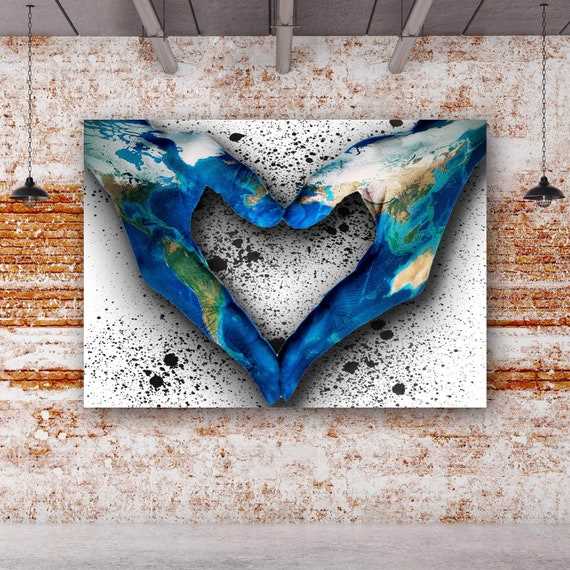
Street art often fosters community engagement and participation. Artists may collaborate with local residents, community organizations, and businesses to create murals and installations that reflect the shared experiences and aspirations of the community.
Additionally, street art can prompt conversations and interactions between people from different backgrounds. It brings art out of galleries and museums, making it accessible and relatable to a wider audience. This can help bridge gaps between communities and foster a sense of unity and understanding.
| Benefits of Street Art as a Cultural Expression |
|---|
| Preserves and promotes cultural identity |
| Redefines cultural norms |
| Encourages community engagement |
| Fosters unity and understanding |
The Evolution of Street Art
Street art has come a long way since its humble beginnings as graffiti. What was once considered a form of vandalism or rebellion has now become a globally recognized art movement.
In its early days, street art was seen as a way for marginalized communities to express themselves and reclaim their public spaces. Graffiti artists used spray paint and stencils to create their works, often under cover of darkness to avoid detection. These early pioneers paved the way for the vibrant and diverse street art scene we see today.
As the art form gained popularity, artists started to experiment with new materials and techniques. Wheatpaste, a mixture of flour and water, was used as an adhesive for large-scale posters and stickers. Stickers also became a popular medium for street artists, with many using them to convey political or social messages.
The rise of street art festivals and events also played a significant role in the evolution of the art form. These events provided a platform for artists to showcase their works and collaborate with other creatives. They also helped to legitimize street art and challenge the notion that it was simply vandalism.
Another notable development in street art is the emergence of 3D and interactive artworks. Artists now use a variety of materials, including chalk, paint, and even moss, to create eye-catching pieces that seemingly come to life. These interactive installations not only engage viewers but also challenge traditional notions of static art.
In recent years, street art has gained even more recognition and acceptance within the art world. Many cities have designated legal walls and outdoor galleries for artists to showcase their works. Some street artists have even achieved mainstream success, with their works being exhibited in galleries and museums around the world.
Street art continues to evolve and push boundaries, both in terms of style and technique. It remains an important form of self-expression for artists and a powerful tool for social commentary. Whether it’s a carefully crafted mural or an unexpected stencil on a street corner, street art has the ability to captivate and inspire viewers in ways that traditional art often cannot.
The Impact of Street Art on Urban Environments
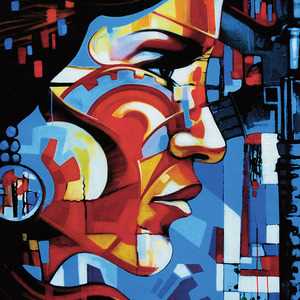
Street art has emerged as a powerful form of self-expression and social commentary that has a significant impact on urban environments. It has transformed dull and mundane spaces, breathing new life into neighborhoods and making them more vibrant and engaging.
One of the key impacts of street art is its ability to challenge the status quo and spark conversations. Through thought-provoking images and messages, street artists address political, social, and environmental issues, forcing people to confront and consider these topics in their daily lives. This form of art has the power to awaken a sense of social consciousness and inspire action among individuals.
Cultural Identity and Community

Street art also plays a crucial role in preserving and promoting cultural identity within urban communities. Artists often draw inspiration from local history, traditions, and folklore, incorporating these elements into their creations. By doing so, they celebrate the unique identity of a place, fostering a sense of pride and belonging among residents.
Moreover, street art has the ability to unite communities and bring people together. Public art installations and murals serve as gathering points, attracting both locals and tourists. They create shared experiences and an opportunity for community engagement. Street art festivals and events further enhance this communal aspect, providing a platform for artists to showcase their work and connect with a wider audience.
Economic Growth and Urban Revitalization
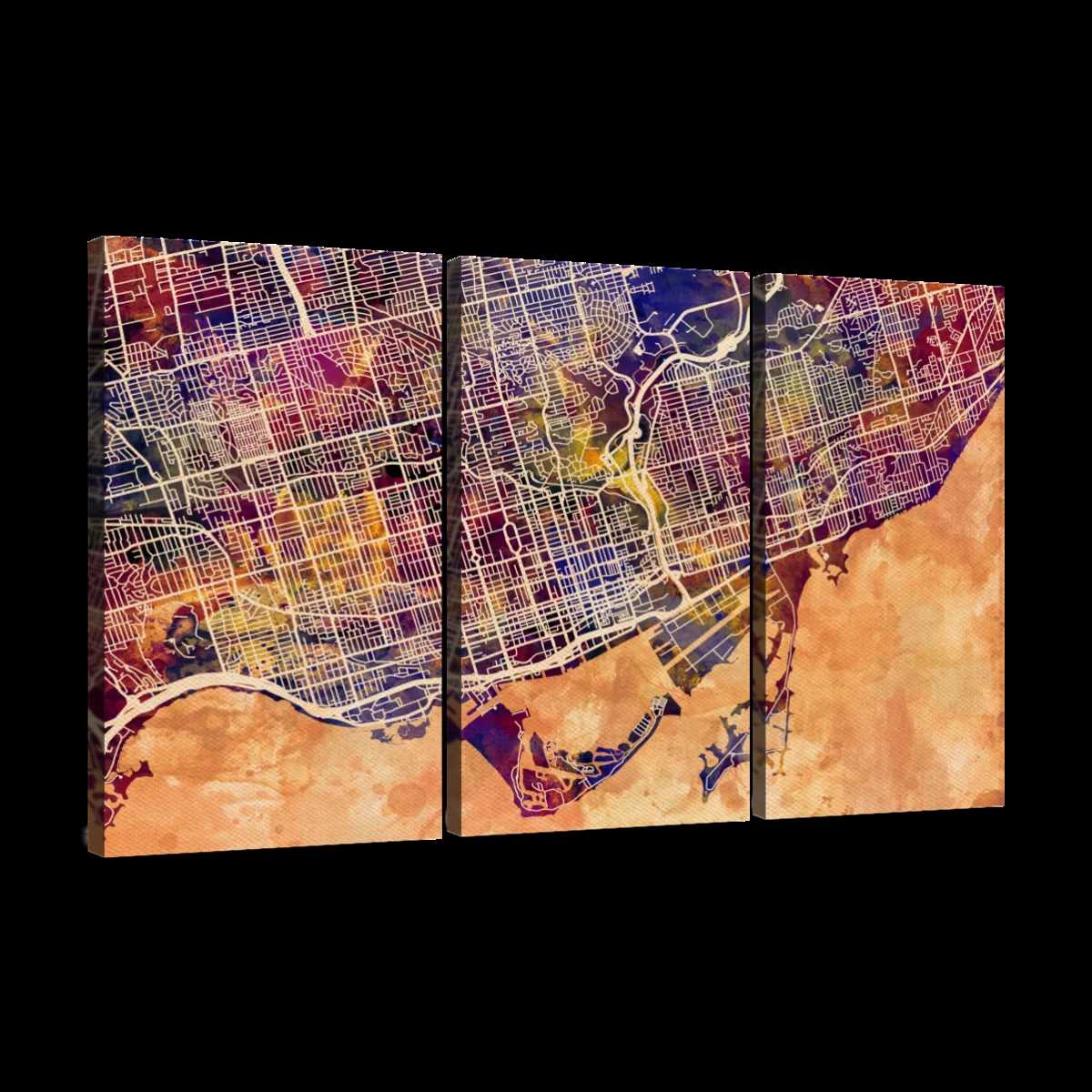
The presence of street art has been linked to economic growth and urban revitalization. Areas once neglected and overlooked can be transformed into vibrant cultural hubs through the addition of vibrant murals and installations. Street art attracts foot traffic, improves property values, and can lead to the development of small businesses, such as art galleries, cafes, and shops.
Furthermore, street art has the power to redefine public spaces and make them more user-friendly. Dull and underutilized areas can become interactive and aesthetically pleasing through the addition of colorful and dynamic artwork. This transformation not only enhances the physical environment but also improves the overall quality of life for residents.

I am a mural enthusiast and a fervent admirer of street art. Rather than creating murals myself, I am passionate about collecting them. My love for street art knows no bounds. I am dedicated to curating and cherishing these artworks that grace the streets. My collection stands as a testament to my profound appreciation for this form of artistic expression.
read about me




